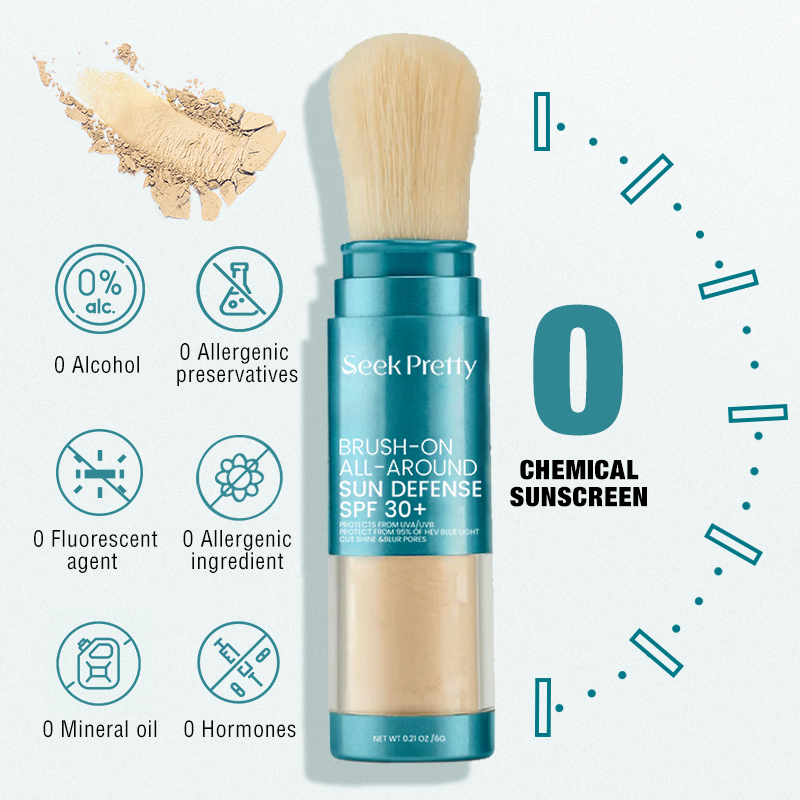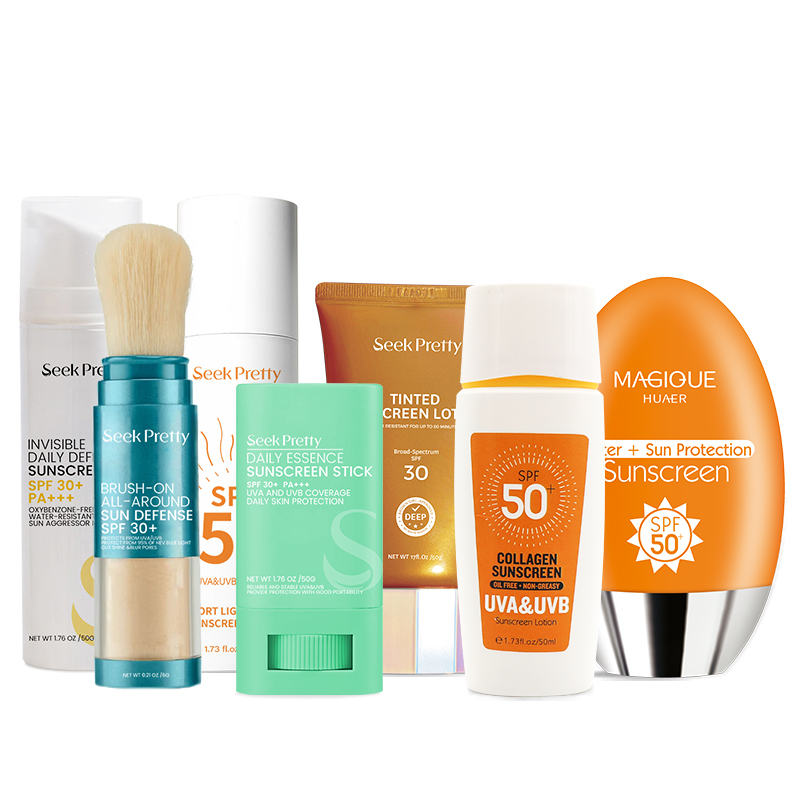+86 186 9588 1207 Mobile Phone
8618695881207 Whatsapp
+86 186 9588 1207 Wechat
info@biohuaer.com E-mail
+86 186 9588 1207 Mobile Phone
8618695881207 Whatsapp
+86 186 9588 1207 Wechat
info@biohuaer.com E-mail
When heat radiation or sunlight shines on the skin, it stimulates and activates the melanocytes (Melanocytes, which are present in the basal cells at a ratio of 10: 1). The melanocytes have pigment particles, synthesize melanosomes in the crude endoplasmic reticulum, and at the same time, Tyrosinase located in the Golgi body catalyzes a series of reactions of tyrosine (Tyrosine) and produces melanin At the same time, the protein, tyrosinase will lose its activity and take over the transport work, transferring it to keratinocytes. Therefore, the more melanin protein is transferred into the keratinocytes, the darker the skin color. When the body is exposed to ultraviolet light, tyrosinase will accelerate the catalytic action and produce melanin protein.
SPF
The abbreviation of Sun Protection Factor in English, sun protection index, UVB, SPF value indicates how many times the skin's tolerance to UVB has increased. Usually 15-20 minutes will be sunburned, if you are sunburned or sunburned in 15 minutes, apply SPF20 sunscreen, 15 * 20 = 300 minutes, that is, after 5 hours, the sunburn will be sunburned
PA
Protection of UVA-1, anti-UVA, sun protection index, PA + means inefficient protection, PA ++ means medium effect protection, PA +++ means efficient protection. Each "+" signifies that the sunscreen can delay the skin from being tanned 2 to 4 times.
PS: The SPF and PA indices are not as high as possible,
Because the greater the intensity of sunscreen, the greater the burden on the skin. The physical sunscreens, titanium dioxide and zinc oxide, are powders that only dissolve in oil, so the more you use, the higher the sun protection index, and the more oily the product will be. If the product is too oily, it will cause dull acne, long closure, greasy face, and whiteness. Sunscreens with chemical sunscreens are more irritating to the skin due to their higher sun protection factor.
If you are only exposed to sunlight during commuting hours, you can choose SPF15, PA + sunscreen, such as office workers. If you need outdoor sports, you can choose SPF20, PA ++ sunscreen, such as the salesman who needs to go out. If you are on a seaside vacation, you need to choose SPF30 or more, PA +++ sunscreen.
Summer sweating, sunscreen is not lasting, need to reapply once every 2-3 hours

Physical sunscreen:
Physical sunscreen molecules (Titanium Dioxide, Zinc Oxide, etc.) will stay on the surface of the skin to form a protective film, and reflect or scatter to isolate ultraviolet rays.
Advantages: The sunscreen with physical sunscreen is mild, less irritating, safe and suitable for sensitive skin
Disadvantages: The feeling of use is not very good: the surface will be white and thick, and it is easy to clog the pores and shine. (Regarding the whitening, pat it with patting and patting when you apply it. After absorption, the sunscreen will become transparent and it is not easy to rub the mud.)
Chemical sunscreen:
Chemical sunscreen molecules (benzophenone, Ethylhexyl salicylate, homosalate, cinoxate, etc.) will work closely with the skin to absorb it before ultraviolet light damages the skin.
Advantages: Sunscreens that use chemical sunscreens are usually light-weight, non-sticky, non-whitening, easy to absorb, and easy to push away
Disadvantages: its chemical components will be absorbed by the skin, so it has a certain allergenicity and irritation.

Physical-chemical combination sunscreen:
In order to integrate the sense of use and safety of sunscreen, a physical-chemical combination of sunscreen was born. Most sunscreens on the market now use a combination of physical and chemical methods.
Advantages: Both light and thin and sun protection.
The specific proportion of the physical sunscreen and chemical sunscreen ingredients determines the texture
 Add to Inquiry Successfully!
Add to Inquiry Successfully!